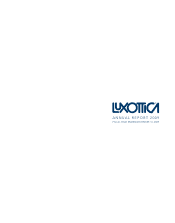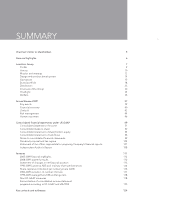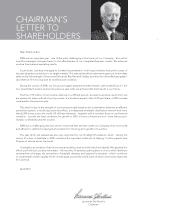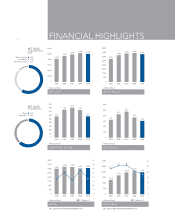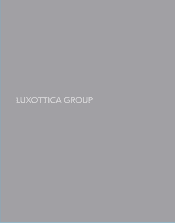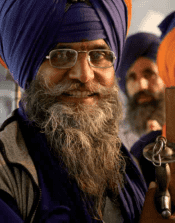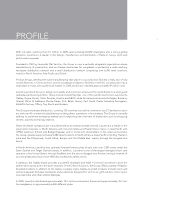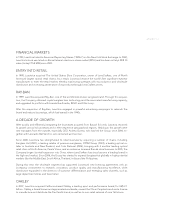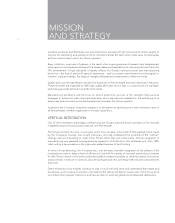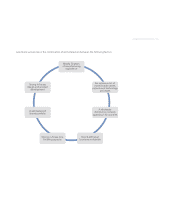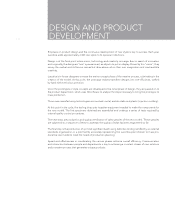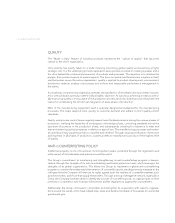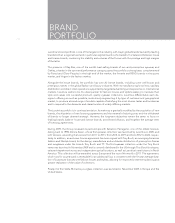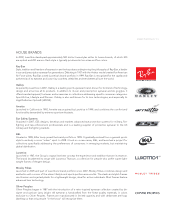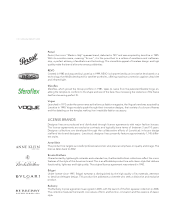LensCrafters 2009 Annual Report Download - page 12
Download and view the complete annual report
Please find page 12 of the 2009 LensCrafters annual report below. You can navigate through the pages in the report by either clicking on the pages listed below, or by using the keyword search tool below to find specific information within the annual report.
HISTORY
FOUNDING
Luxottica Group was founded by Leonardo Del Vecchio in 1961, when he set up Luxottica di Del Vecchio e
C. S.A.S., which became a joint-stock company organized under the laws of Italy under the name of Luxot-
tica S.p.A. in 1964. Having started out as a small workshop, the Company operated until the end of the
1960s as a contract producer of dies, metal components and semi-fi nished goods for the optical industry.
Leonardo Del Vecchio gradually widened the range of processes until he had an integrated manufacturing
structure capable of producing a fi nished pair of glasses. In 1971, Luxottica’s fi rst collection of prescription
eyewear was presented at Milan’s MIDO (an international optics trade fair), thus marking Luxottica’s transi-
tion from contract manufacturer to independent producer.
EXPANSION IN WHOLESALE
In the early 1970s, the Company sold its frames exclusively through wholesalers. In 1974, after fi ve years
of sustained development of its manufacturing capacity, Mr. Del Vecchio understood the importance of a
strategy of vertical integration, with the goal of distributing frames directly onto the market. The fi rst step
was the acquisition of Scarrone S.p.A., which had marketed the Company’s products since 1971 and which
brought with it vital knowledge of the Italian market.
International expansion began in the 1980s with the acquisition of independent distributors, the opening
of branches and the forming of joint-ventures in key international markets. Having started with the opening
of the fi rst commercial subsidiary in Germany in 1981, the Company’s international wholesale development
continued with the acquisition of Avant-Garde Optics Inc., a wholesale distributor in the US market, in the
mid-1980s, and the acquisition of Mirari in Japan, in the 1990s.
The international expansion of the wholesale distribution network continues today as the Group opens
new distribution channels in emerging markets.
EYEWEAR: A NEW FRONTIER OF FASHION
Throughout its history, Luxottica has invested in its products. The acquisition of La Meccanoptica Leonardo
in 1981, the owner of the Sferofl ex brand and an important fl exible hinge patent, enabled the Company to
enhance the image and quality of its products and increase its market share.
Beginning in the late 1980s, eyeglasses, previously perceived as mere sight-correcting instruments, began
to evolve into "eyewear." Continual aesthetic focus on everyday objects and interest on the part of fashion
designers in the emerging accessories industry led Luxottica, in 1988, to embark on its fi rst collaboration
with the fashion industry, by entering into a licensing agreement with Giorgio Armani. The Company fol-
lowed up that initial experience (the Armani license terminated in 2003) with numerous others, gradually
building the current world-class brand portfolio featuring names like Bvlgari (1996), Salvatore Ferragamo
(1998), Chanel (1999), Prada and Versace (2003), Donna Karan (2005), Dolce & Gabbana and Burberry (2006),
Polo Ralph Lauren (2007), Tiffany (2008), Stella McCartney and Tory Burch (2009).
As for house brands, the Company slowly expanded in the sun business by buying Vogue (1990), Persol
(1995), Ray-Ban (1999) and Oakley (2007).
> 10



